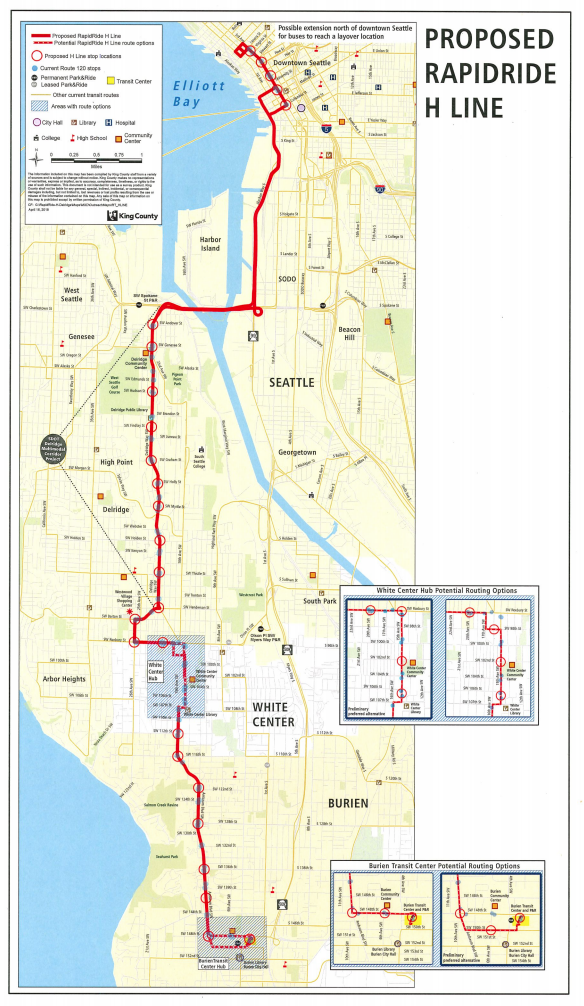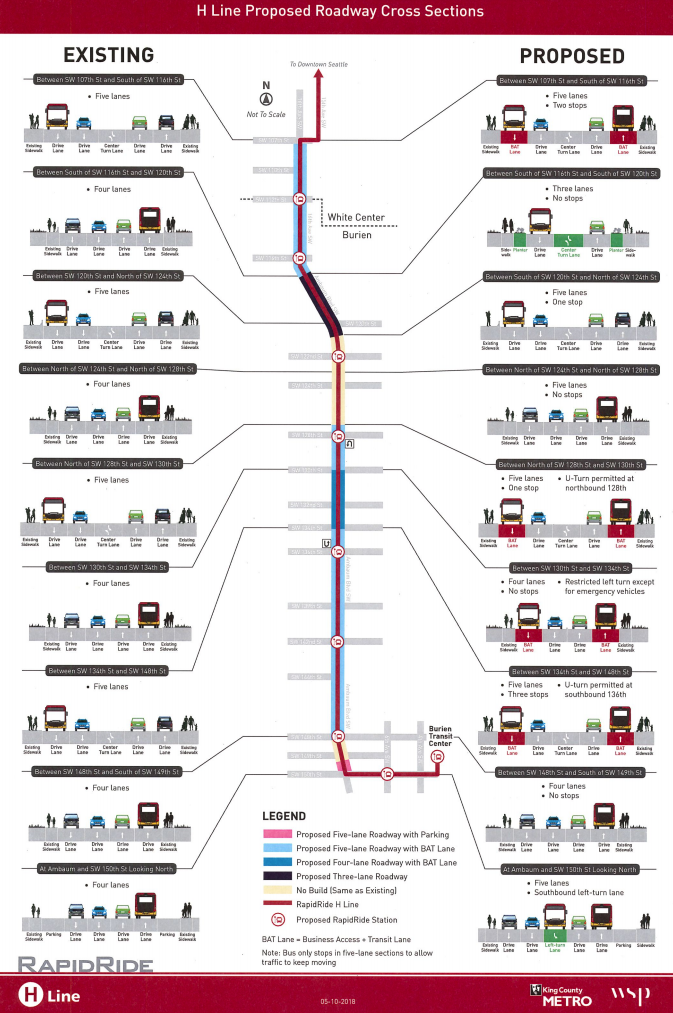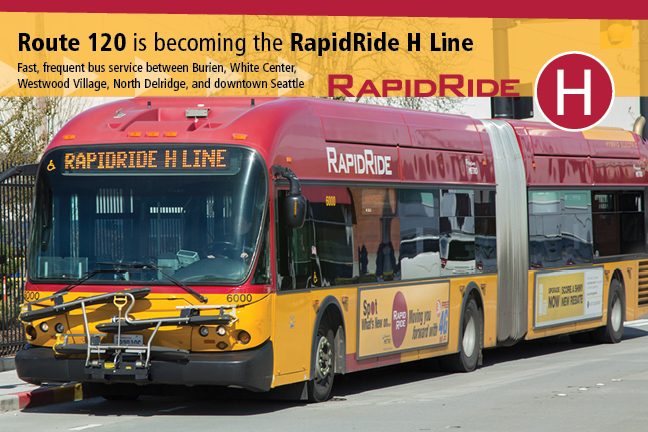The City of Burien has signed off on a proposal by King County Metro Transit to bring RapidRide service to the community by 2020. In reviewing program options, Metro had considered two primary alternatives to deploy RapidRide between White Center and Burien, which offered different levels of investments and transit priority. Metro has selected a third option, Alternative C, for the corridor which blends the two primary options and is slated to cost approximately $14 million (Alternative A was $17 million, Alternative B was $12.5 million).
Alternative C is projected to reduce transit travel times between SW 107th St and SW 148th St a noticeable amount for riders of Route 120. Travel times for transit should drop about 13% in both directions while general traffic travel times could modestly increase by 5% to 8%, depending upon direction. It’s a worthy tradeoff, though, given that the RapidRide H Line should help increase ridership by more than a third to 12,800 by 2023 each weekday.

While the selected alternative shores up plans for lower segment of the corridor, Metro is still in the process of developing plans further up the line through White Center, Delridge, and Downtown Seattle.
Metro has published a handy corridor cross-section illustration comparing existing roadway configurations and proposed roadway configurations, focusing on the segment between SW 107th St and Burien Transit Center:

As should be evident from the cross-sections, a majority of the corridor will be designed to accommodate business access and transit (BAT) lanes, generally in both directions to speed buses. This should be helpful for transit particularly at intersections and key chokepoints, but also should reduce the challenges of pulling in and out of lanes or stopping in normal ones, reducing overall dwell times and safety risks. One segment where Ambaum Blvd SW curves dramatically will involve conversion of a four-lane section to two lanes with a median turn pocket, new planter strips, and rebuilt sidewalks to increase safety where its historically been a serious problem. Other improvements along the corridor include:
- 12 new pedestrian crosswalks, several of which include midblock crossings, median refuges, and crossing lights and beacons;
- New sidewalks at the Burien Transit Center and a small portion of Ambaum Blvd SW;
- 15 new bus platforms to accommodate stop shelters, kiosks, and passengers;
- Three queue jumps for buses;
- One new general traffic signal; and
- Three pedestrian lights/beacons for crossings near the Burien Transit Center.
Notably missing from the proposed designs, however, are bike lanes. No segment will include them as in-street facilities, which will leave people deciding to bike to transit or through the corridor to use the BAT lanes or parallel streets.
In addition to the diagram above, Metro has produced more detailed planned improvements for the roadway shown block by block in the following cross-sections which overlay project elements with aerial images of the corridor:
As plans continue to solidify over the coming months, we should get a better sense of how the RapidRide H Line corridor will function from Downtown Seattle to Burien. King County is accepting RapidRide H feedback at this website.
King County Metro Asks for Next Round of Feedback on RapidRide H Line
Stephen is a professional urban planner in Puget Sound with a passion for sustainable, livable, and diverse cities. He is especially interested in how policies, regulations, and programs can promote positive outcomes for communities. With stints in great cities like Bellingham and Cork, Stephen currently lives in Seattle. He primarily covers land use and transportation issues and has been with The Urbanist since 2014.



